In a giant clean room in the middle of Denver, the capital and largest city of the US state of Colorado, there is a giant satellite lying dormant, waiting for the day to enter orbit. Engineers in Lockheed Martin’s Space division are constantly moving around its massive body, people you can’t tell from each other because they’re all covered by a tight shield. mask and full body protective clothing.
They placed the space satellite on a large forklift truck, performing laser-guided measurements. They shuffled below the satellite’s belly, triple-checking the position of the wires and instruments. They leaned close to its massive silver heat reflector, carefully tuning components as small as a thousandth of an inch.
To gain access to Lockheed’s facilities, including this cleanroom, you will be required to go through a full security authentication process. The facility still accepts both US citizens and foreigners, but with a slight difference in the color of the dress so that people can recognize it as a foreigner. For example, both US and Australian citizens will wear all white, but Australians will receive an orange hair band, or something similar, for easy identification while on campus.
And you’ll have to accept these rules, to get a chance to get up close and personal with GOES-T, a giant weather satellite that Lockheed Martin is building for the National Oceanic and Atmospheric Administration. (NOAA) with NASA. This satellite is intended to enter geostationary orbit, a little more than 35,000 km above the Earth’s surface, and is responsible for collecting a large amount of weather data here, from both Earth and in space.
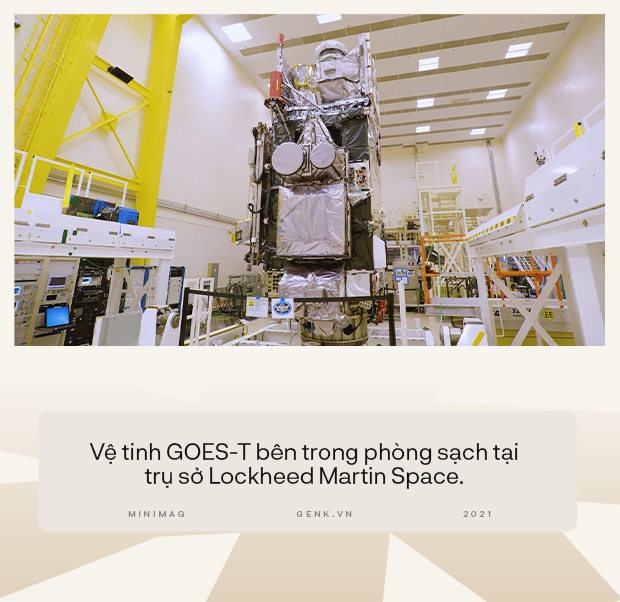
“We will receive 30 times more data on this satellite than on previous satellites,” GOES-T Deputy Program Manager Alreen Knaub said. “We’re working on space weather, solar weather, and also Earth weather.”
After launch, scheduled for February 2022, the satellite will track meteorological events in detail and accuracy, map lightning flashes, track heat paths and even weather conditions. extreme weather in real time. All this data coming down from space could potentially save lives, help scientists and meteorologists better predict natural disasters, and protect us all here on Earth. ground.
Care is not superfluous when building a spaceship and preparing for its launch. From the initial fabrication of the circuit boards inside the satellite to the final test, the team at Lockheed Martin Space cares about accuracy at every stage of the construction process. It’s not just about being careful in the “measure twice, then cut” way. It would be countless laser measurements, repositioning, remeasurement, continuous testing, then taking a unique opportunity to proceed.
After all, this is not the kind of electronic hardware you see every day. If a satellite fails, it is almost impossible to repair it at 35,000 km above the ground.
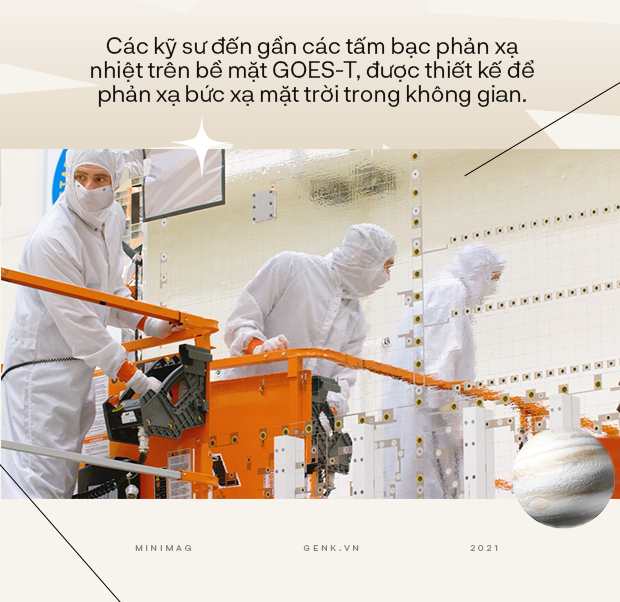

GOES-T is the third in a series of four “geostationary operational environmental satellites” used by NOAA to monitor weather from orbit. As geostationary satellites, these special spacecraft are designed to stay in a fixed orbit according to the Earth’s rotation time. And GOES-T is set up to be “stationed” above North and South America, collecting data for the Western Hemisphere.
The aforementioned group of satellites is called the “GOES-R family” satellites. Each satellite has an alphabetical name on Earth, but when it enters space will be assigned a number. For example, the GOES-R and GOES-S satellites launched in 2016 and 2018, they are now called GOES-16 and GOES-17. Once launched, GOES-T will become GOES-18. The final GOES-U satellite is still in the early stages of construction and is expected to launch in 2024.

GOES-T has tools to monitor space activity and solar weather phenomena such as solar flares, or changes in the magnetosphere and radiation hazards. All of these factors have the potential to affect not only the weather, but also electronics and communications on Earth and at the International Space Station. In fact, one of the missions of the GOES satellite is to provide warnings to astronauts on the ISS about upcoming solar activity that could affect their operations, or the potential to interfere with instruments. their equipment.
The GOES-T satellite is also equipped with tools to monitor Earth’s weather, such as a geostationary lightning map, which can map lightning around the world. Or an enhanced baseline camera, to get images of clouds, the atmosphere, and the Earth’s surface.
“Not only can we monitor wildfires, but we can measure their heat signature, so we can see if they’re on the rise.”, Mr. Knaub said. “So when you see the threat of bushfires increasing, it’s usually based on data from this satellite. It’s a great tool for predicting wildfires, managing wildfires and showing where it needs to be. send the firemen.”
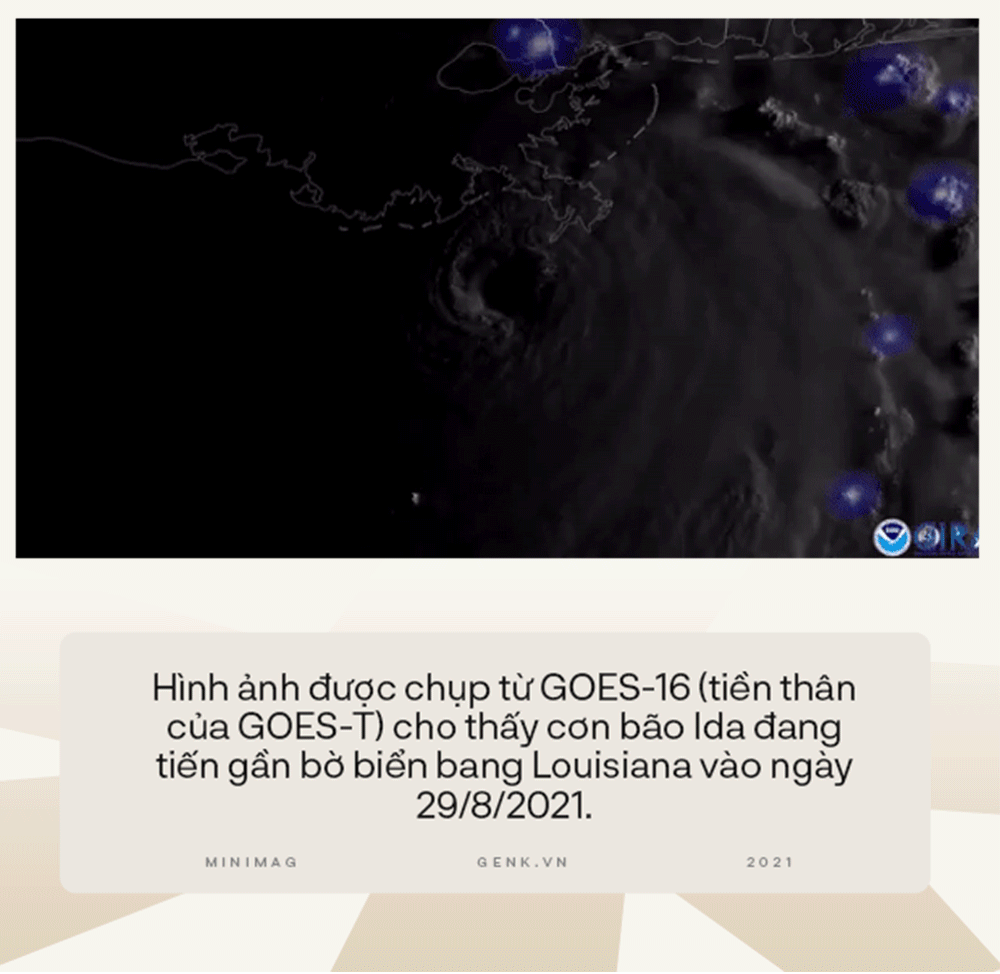
This type of data has a huge impact on our daily lives, even if we don’t realize it. In emergencies like Hurricane Ida, which hit the US Gulf of Mexico coast this past summer, data brought down from GOES satellites has been used.
“Ida as a Category 2 hurricane, based on thermal imaging of the Gulf, they knew it would rapidly strengthen to a Category 4 when it made landfall in that area.” Knaub said. “And so we predicted it would hit land within two hours, and within a few kilometers of where we were told, within 60 hours. This is unprecedented. Yes.”

Accuracy in the sky starts with accuracy on the ground, and for the team at Lockheed Martin, that starts with the tiny components that power satellites.
And it’s across the street from the clean room, called the Lockheed Aerospace Electronics Center (SEC). This is where electrical engineers manufacture, assemble, and solder the circuit boards, modules and electronic boxes for the space satellite.
Angelo Trujillo, one of the technical support specialists at the SEC, said: “We focus on power and avionics, which will become the satellite’s life and brains.”
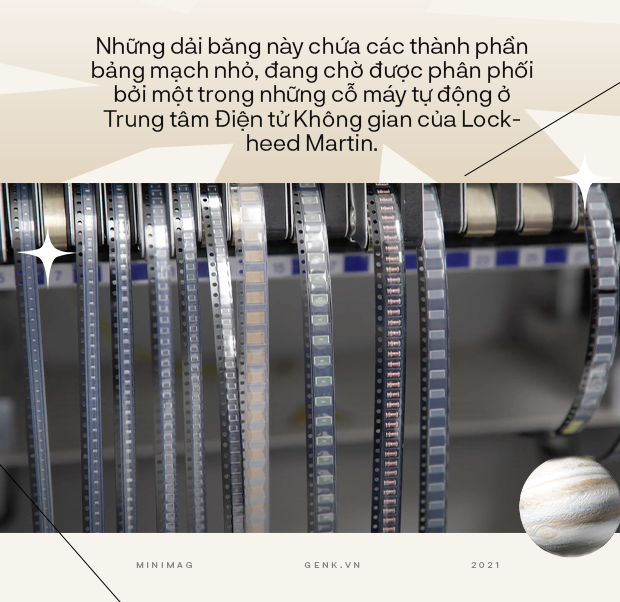
While many of these components were once welded by hand, much of the fabrication is now done with the help of automated machinery. Walking around the SEC lab, you can see machines programmed to solder circuits and robotic arms in action as they place components on circuit boards. Gone are the days when electrical engineers would identify tiny resistors based on their color-coded stripes – instead, small circuit boards of plastic-wrapped components wrapped like film, are at the ready. are put into the machine for automatic assembly.
“It’s so much better than a mastery and still effective, because we get the same results,” Trujillo shared. “It’s going to take a lot longer to hand solder. What we can do in an hour right now, it’s going to take a week or two to try and solder by hand.”
And automation not only saves time but also helps avoid costly failures. Lockheed Martin declined to disclose how much it cost to build GOES-T, but the entire GOES-R program has a budget of $10.8 billion.
After leaving the SEC, the electronics and circuit boards will be combined with other components in an assembly process that has been described as sounding like playing a giant Lego game, albeit with a set amount of money. The bet is much higher.

“GOES-T really starts out as a bunch of parts and they’re going to be assembled into boxes, and then the boxes become what they call subsystems,” Knaub said. “So just like your house has an air conditioner, a heater, this satellite has the same things. It has an electrical system. It has a heating system. It has a navigation and air conditioning system. navigation control. And all of that put together… It’s actually quite complicated.”
Before all of them are assembled into complete satellites, each of these systems and components must be subjected to “torture” testing to ensure it can survive in orbit. The idea of this is to find problems on Earth, instead of letting them become problems in space.
The components will be tested for vibration, by simulating the shaking of a rocket launch. They are then tested to see if they can withstand the extreme temperature fluctuations they will experience in orbit.
So Lockheed has its own space simulator that includes things like a vacuum sealed tube, something about the size of a small car, called a thermal vacuum chamber. Components would be placed inside the device, with the door sealed, and then engineers would vacuum it up before letting it run through a cycle of hot and cold temperatures.
Then, when those components are integrated into the satellite, and all of that happens again: mechanical environment testing to simulate launch, more vacuum and thermal testing. And of course, testing the accuracy of communication equipment.
“We actually blew it up with electromagnetic waves to make sure it could see all the visible components afterwards,” Knaub said.

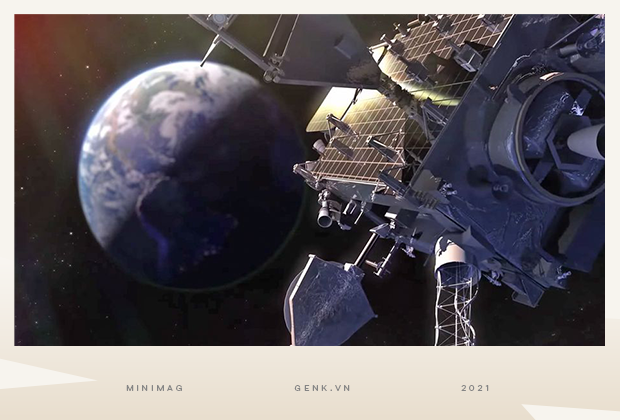
After GOES-T completes its tests, it will be launched from Space Launch Complex-41 in Cape Canaveral, Florida, on an Atlas V rocket. It will blast through the atmosphere to join a larger group of people. Another 3,000 satellites are orbiting the Earth. And then the satellite will hold its own right over the Americas, with the hope that over the years it will send scientific data back to Earth.
If GOES-T succeeds in its mission, it will certainly save lives, yield more weather data in less time, and help astronomers predict the path and intensity of storms. extreme weather events such as hurricanes and wildfires.
But, chances are most of us won’t really know it’s there. It will silently launch data that we eventually see on weather apps, or in evening news updates. It will become one of thousands of man-made sentinels, orbiting our planet, 24 hours a day, to help us stay connected and alive.
.
